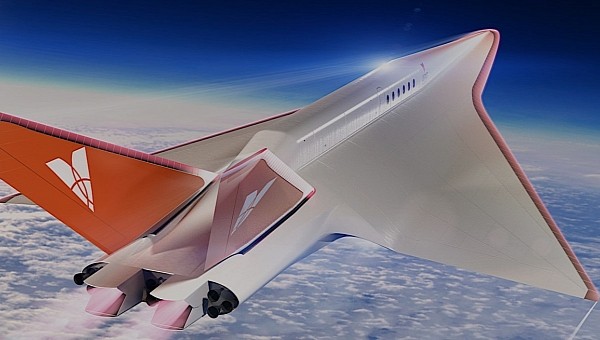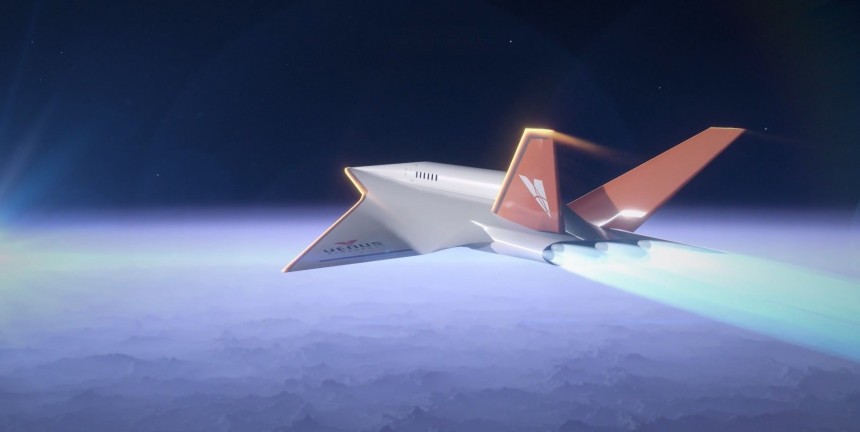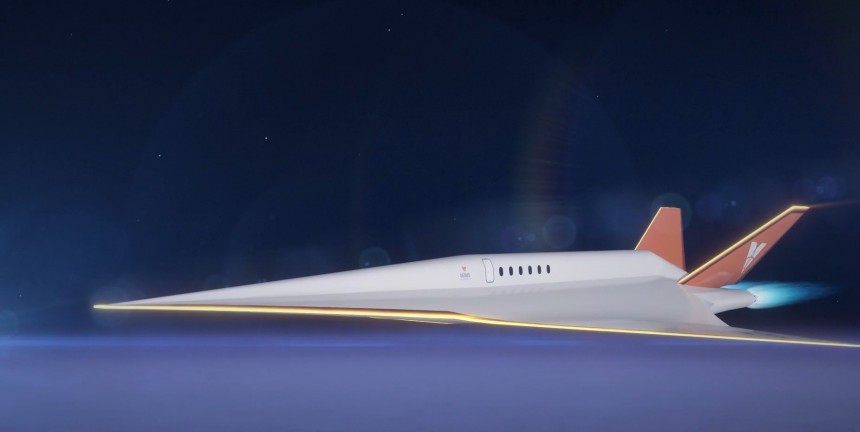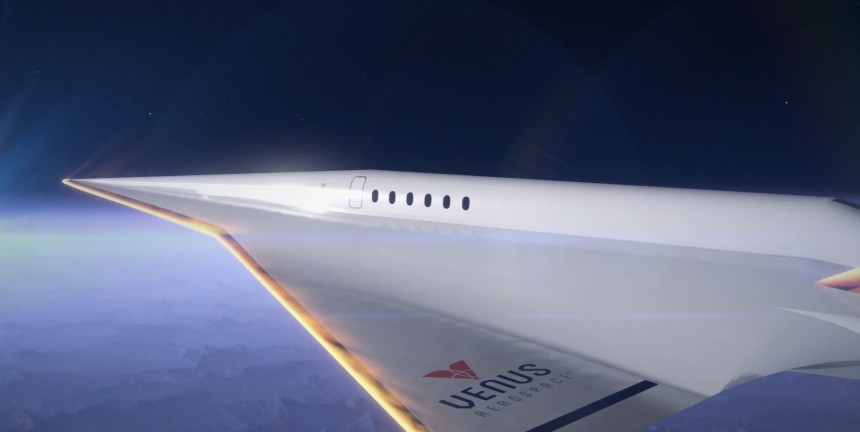Before becoming famous as the captain of the USS Enterprise NCC-1701-D Federation starship, Jean-Luc Picard was a member of the crew serving aboard the USS Stargazer. That would be a Sagan-class ship that is quite important for Trekkies. I wonder what they have to say about a contraption that has nothing to do with star travel using the name. Even if it’s described as the fastest reusable hypersonic aircraft ever designed…
The last few years have been Godsent for people wishing to have a say in the aerospace industry. Tens of startups were born over the past decade, each gunning, as per their own possibilities, to become famous and profitable in their business.
One such startup is Houston, Texas-based Venus Aerospace. Created just three short years ago, in 2020, it claims to be working on a hypersonic spaceplane capable of traveling at speeds of Mach 9 (that’s 6,900 mph or 11,100 kph), placing virtually any destination on this Earth within one hour of travel time, almost regardless of where the departure point is.
The ship is called, how else, Stargazer, and, for the moment, it only exists as a conceptual design. It was shown for the first time back in the summer of last year, during the UP.Summit, an invitation-only event pulling together in Arkansas “250 of the world’s most innovative minds rethinking the future of transportation.”
Important to keep in mind is that the Stargazer is more of an airplane than a starship. That means it should be capable of taking off from a conventional airport in a conventional way, going down the runway until it reaches enough speed to get airborne.
To do so it will use jet engines the likes of which we already know. After a while, when the plane clears populated areas, the rocket engine powering it will be switched on. This will push the Stargazer to altitudes of 32 miles (51 km) and on to speeds of Mach 9.
Now, the official title of the contraption is Venus Stargazer Spaceplane, but, by all accounts, 32 miles into the air is no way near the agreed-upon limit to space, the Karman line. So, spaceplane is not exactly a suitable name for it.
On the other hand, the highest point an aircraft taking off under its own power was able to reach was 23 miles (37 km) – that would be a Russian MiG E which hit that height in 1977 – so the Stargazer is not exactly your everyday airplane either.
No matter how one chooses to call it, the Stargazer should be a spectacular sight, if you’re fast enough to catch it in the sky, that is. Its secret is the rocket engine, a rotating detonation (RDRE) piece of hardware that at the point of writing is insufficiently detailed.
This type of engine works on the principle of detonation waves. In a nutshell, it means that fuel and oxidizer are thrown into a channel in the engine assembly and are detonated in such a way that these small explosions become self-sustaining. It’s the supersonic pressure waves generated by the detonations that help push the machine using RDRE forward.
It's an idea NASA itself is considering, and, together with a company called IN Space, conducted hot fire tests of an RDRE design back in 2022. After all, if this concept proves its merits, it may very well become a means of propulsion for spaceships going to the Moon, Mars, and beyond.
In Venus’ case, we’re told the RDRE passed its first milestone in October last year (video below this text). It was then that the crew claimed it “became the first company in the world to get room temperature storable liquid fuels to operate in a Rotating Detonation Rocket Engine (RDRE).” Three months' worth of tests of the hardware were performed, but we are given very few details of what the exact findings were. It's also unclear what type of fuel the Venus RDRE will use.
As for the Stargazer’s design, the renderings shown last year reveal a wave rider approach and a delta wing configuration, with all engines, both the jet and RDRE, mounted at the rear.
The cabin, which should be capable of holding a total of 12 passengers, rises above the plane of the wings with their protected leading edges, and two large stabilizers can be seen at the rear. In all, the plane measures 150 feet (45 meters) long and 100 feet (30 meters) from wing tip to wing tip. The takeoff weight is estimated at 150,000 pounds (75 tons).
It's unclear what the Stargazer will be made of, but we are told it will feature a heat transfer system meant to help it cope with the high temperatures resulting from hypersonic travel. The plane will also use gliding to move through the thin air at those altitudes.
Those worrying a hypersonic plane flying over their heads will be a constant source of sonic booms can rest assured it will not, as the altitude where this thing operates makes it all but impossible to hear.
All of the above sounds incredibly exciting, but the reality is the Stargazer will not come about for a very long time. No timeline has been provided when it comes to its development, and the $33 million in investments received so far seem not nearly enough to see a project of this scale taken to a palpable result. But one can only hope…
One such startup is Houston, Texas-based Venus Aerospace. Created just three short years ago, in 2020, it claims to be working on a hypersonic spaceplane capable of traveling at speeds of Mach 9 (that’s 6,900 mph or 11,100 kph), placing virtually any destination on this Earth within one hour of travel time, almost regardless of where the departure point is.
The ship is called, how else, Stargazer, and, for the moment, it only exists as a conceptual design. It was shown for the first time back in the summer of last year, during the UP.Summit, an invitation-only event pulling together in Arkansas “250 of the world’s most innovative minds rethinking the future of transportation.”
Important to keep in mind is that the Stargazer is more of an airplane than a starship. That means it should be capable of taking off from a conventional airport in a conventional way, going down the runway until it reaches enough speed to get airborne.
Now, the official title of the contraption is Venus Stargazer Spaceplane, but, by all accounts, 32 miles into the air is no way near the agreed-upon limit to space, the Karman line. So, spaceplane is not exactly a suitable name for it.
On the other hand, the highest point an aircraft taking off under its own power was able to reach was 23 miles (37 km) – that would be a Russian MiG E which hit that height in 1977 – so the Stargazer is not exactly your everyday airplane either.
No matter how one chooses to call it, the Stargazer should be a spectacular sight, if you’re fast enough to catch it in the sky, that is. Its secret is the rocket engine, a rotating detonation (RDRE) piece of hardware that at the point of writing is insufficiently detailed.
This type of engine works on the principle of detonation waves. In a nutshell, it means that fuel and oxidizer are thrown into a channel in the engine assembly and are detonated in such a way that these small explosions become self-sustaining. It’s the supersonic pressure waves generated by the detonations that help push the machine using RDRE forward.
In Venus’ case, we’re told the RDRE passed its first milestone in October last year (video below this text). It was then that the crew claimed it “became the first company in the world to get room temperature storable liquid fuels to operate in a Rotating Detonation Rocket Engine (RDRE).” Three months' worth of tests of the hardware were performed, but we are given very few details of what the exact findings were. It's also unclear what type of fuel the Venus RDRE will use.
As for the Stargazer’s design, the renderings shown last year reveal a wave rider approach and a delta wing configuration, with all engines, both the jet and RDRE, mounted at the rear.
The cabin, which should be capable of holding a total of 12 passengers, rises above the plane of the wings with their protected leading edges, and two large stabilizers can be seen at the rear. In all, the plane measures 150 feet (45 meters) long and 100 feet (30 meters) from wing tip to wing tip. The takeoff weight is estimated at 150,000 pounds (75 tons).
Those worrying a hypersonic plane flying over their heads will be a constant source of sonic booms can rest assured it will not, as the altitude where this thing operates makes it all but impossible to hear.
All of the above sounds incredibly exciting, but the reality is the Stargazer will not come about for a very long time. No timeline has been provided when it comes to its development, and the $33 million in investments received so far seem not nearly enough to see a project of this scale taken to a palpable result. But one can only hope…









